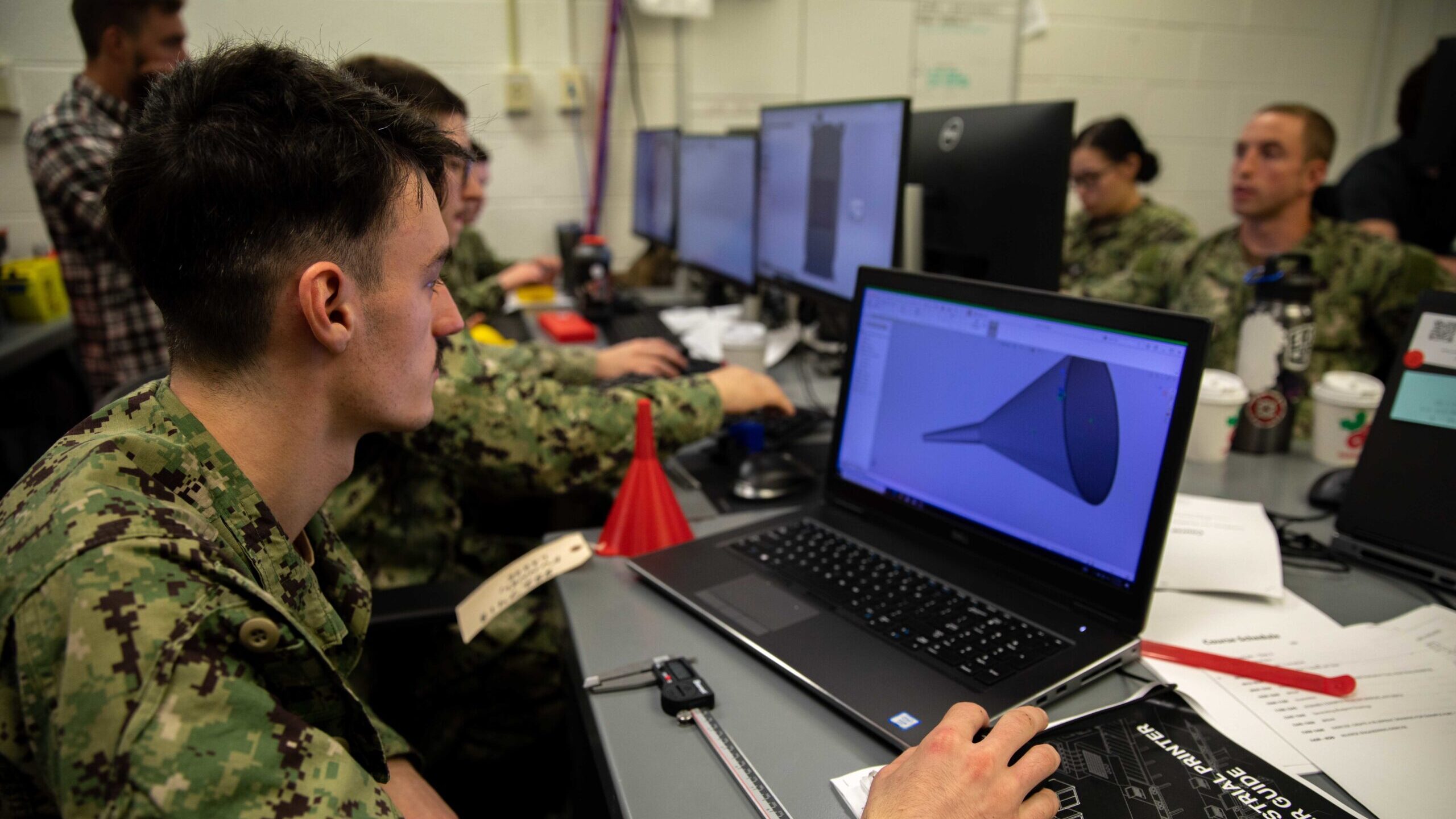
Fireman Dalton Garret, assigned to the Wasp-class amphibious assault ship USS Bataan (LHD 5) Engineering Department, produces a computer aided draft for a three-dimensional printing project, Nov. 16, 2022. (U.S. Navy photo by Mass Communication Specialist 2nd Class Matthew F. Brown)
SEA AIR SPACE 2023 — Naval Sea Systems Command has given HII the green light to begin using certain stainless steel, 3D printed materials in its shipyards, a key approval that a company executive says will open the door to more broadly using additive manufacturing across naval platforms.
The certification, which the company announced early last month, allows for HII to begin using a stainless steel alloy known as “316/316L” to produce pipefittings and other components on aircraft carriers and submarines.
But John Ralls, deputy chief engineer for additive manufacturing for Newport News Shipbuilding, told Breaking Defense in an interview leading up to the Sea Air Space exposition the approval has greater implications.
He described the steps for using 3D-printed components boils down to four elements: the processes and procedures for manufacturing it; the materials being employed; the people operating the equipment and the application or use case. All four elements needed to get individual approval from the Navy before HII could move forward with using the components in question.
“The significance of the qualification in the [announcement] is, those first three elements… the roadblocks that are necessary to overcome for deployment have effectively been answered,” he said. “The process and procedures are approved. The material has been sufficiently demonstrated to show the right level of technical rigor has been performed and… the operator that uses those [things] has demonstrated a level of proficiency.”
It’s an incremental step, but an important one, Ralls said, if the company wants to continue looking at different materials to help bolster the supply chain for building various Navy vessels.
Additive manufacturing in the context of the defense industrial base has been a long, slow burn. Military brass have frequently discussed it as a method for bolstering supply chains that may have eroded over time or providing sailors with quick fixes to problems while forward deployed — such as aboard an amphibious ship at sea.
But the processes to get materials approved for individual use cases has been a protracted one, as the service’s technical authorities, in this case Naval Sea Systems Command, have to vet materials thoroughly before allowing them to be used aboard a ship. The Government Accountability Office has also documented potential cybersecurity risks associated the Pentagon’s use of additive manufacturing.
At least one 3D-printer has “already proven itself shipboard on a handful of aircraft carriers and at least one submarine tender,” Jim Pluta, additive manufacturing program manager for Naval Sea Systems Command, told Breaking Defense in an interview in November.
Ralls, who has worked for HII for 20 years, 10 of which were focused on additive manufacturing, said the long pole in the tent for 3D printing has shifted over time. When he started at HII, the biggest issue was awareness and understanding of what could be achieved.
Today, he said the larger issue has become streamlining the process of qualifying every step associated with using 3D-printed components.
“I think there’s opportunities to accelerate [that streamlining] right now. I think there’s a lot of folks who are working that problem and as those barriers are removed in terms of materials and qualification efficiencies, then I think we’ll see a growth of even more parts deployed,” he said.








